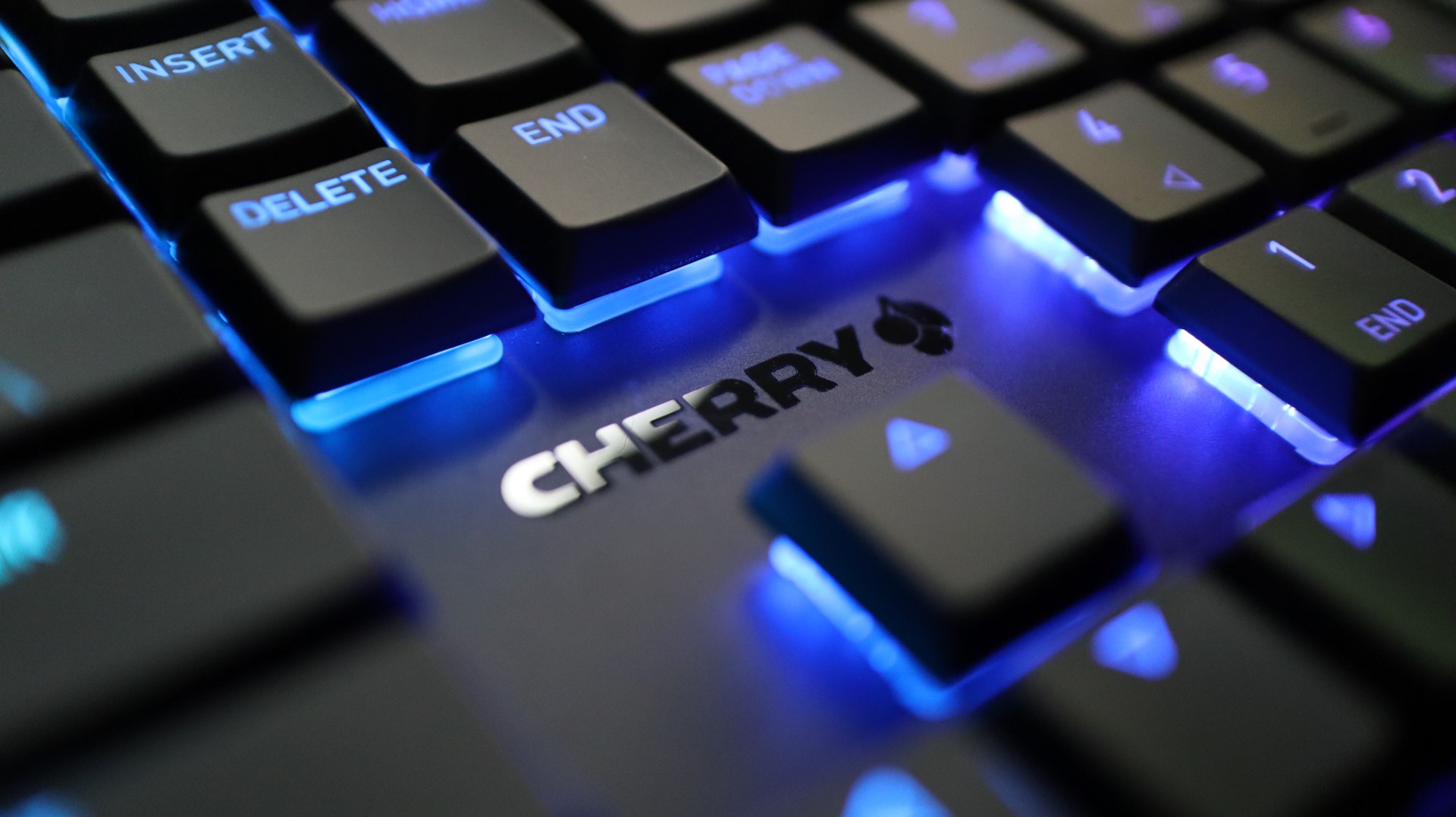Cherry MX 10.0N RGB Overview
The standard 104 keys are laid out in a traditional configuration, with some of the top Function keys performing double duty as both Function keys and on-board lighting and media controls. The MX 10.0N RGB features a mostly frameless design, with the black metal body of the keyboard providing a small border around the keys. The side edges of the body have an angled edge, while the bottom edge is a straight edge. Above the top row of keys, the metal body rounds off and encompasses the hinges of the fold-out base, which I will cover in a bit. In addition to the standard 104 keys typically found on a full-size keyboard, the MX 10.0N also features four additional keys above the numpad. Three volume keys are available for volume up, down, and mute, while the last extra key functions as a quick launch for the calculator application.
Just above the four arrow keys is a very subtle Cherry nameplate and logo that has been added to the board body.
Where we really begin to see just thin the MX 10.0N RGB is, is when we take a look at the profile of the keyboard. At just 22mm in height, the MX 10.0N RGB is about as thin as they come. With the one-piece stand retracted, the keyboard has a very low side profile, and when the stand is extended, the keys sit at about the same height as most other keyboards with their legs retracted. This side view also shows just how shallow the removable keycaps really are. While not as short as your standard laptop keycaps, the ABS caps found on the MX 10.0N RGB are much shorter than standard mechanical switch keycaps.
Along the top edge of the keyboard body, right in the center, is the keyboard’s USB Type-C port. Providing the option to detach the cable from the keyboard makes transportation a breeze, and also allows you to customize your setup with a custom cable. We did however find that the small opening surrounding this port did not allow us to use many of our other USB Type-C cables, as their plugs were too large to fit in the opening. The provided cable is 1.6m long, and should be sufficient for most users’ needs, but we do wish there was a bit more room to support custom cables, which are becoming more popular as time goes on.
Taking a look at the bottom of the keyboard, I was presented with the most basic looking base I have ever seen. Aside from a rubber strip that runs the length of the front of the keyboard, and the hinged stand with its rubber feet, the bottom is featureless. In all reality though, if you lift up the hinged stand, you are presented with a red sticker that provides your standard product information typically found in this area.
Speaking of the hinge, the single piece of aluminum runs the length of the keyboard body, and is attached to the board body via two hinged connections. Two small rubber feet keep the board in place, and are functional in all angles of use. One really cool feature of the stand is that you can adjust it across multiple angles in order to find an angle that feels best to you. And when not in use, the hinged stand will rotate back into a “closed” position, thanks to the internal springs of the hinges.
As mentioned earlier, the MX 10.0N RGB uses Cherry MX low-profile speed mechanical switches, which when paired with the ABS keycaps, produce a dull typing sound that is quite pleasing to the ear. The MX low-profile speed switches have a linear switching motion, meaning there is no tactile clicking feeling when the key is depressed. With just 3.2mm of key travel, these switches really make for a quick and responsive typing experience. These switches feature a transparent body that allows the RGB LED at the top of the switch to shine up into the keycaps. The MX low-profile speed switches utilize a standard Cherry stem for easy compatibility with other compatible keycaps.












